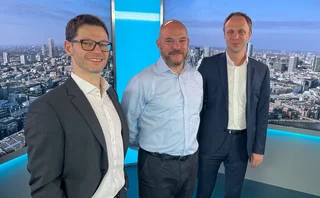
To Hull and back: a 20-year hiatus in bank e-trading plans
In the 1990s, banks tried to buy automated trading expertise; now, after a long break, they’re trying to build it
Over the past month, Risk.net has published a series of articles on the digital overhaul of the front office. They cover the marriage of humans and machines, Symphony’s bot army, attempts to spot toxic clients, and the rise of systematic market-making.
When Goldman Sachs bought Hull Trading Company in 1999, the investment bank was looking for a way to boost the profit it made from trading. The 250-strong Chicago-based firm had built scientific, data-driven market-making software that was the envy of Wall Street. Goldman planned to apply it across a wider set of products than the listed futures and options traded by Hull.
It never really took root. Now, roughly two decades later, the bank and some of its rivals are having another bite at the cherry.
What caused that cosmic pause in strategy is a complex and nuanced story; a brew of culture, commerce and personality mixed in different proportions at each bank. This isn’t the place to tell that story, though, so let’s grossly simplify it.
In essence, two things stopped banks following through on the conviction they had at the end of the 1990s.
First, they started making a huge amount of money from fixed income in general and structured credit in particular; products that were a world away from those handled by Hull Trading and O’Connor & Associates – another revered Chicago trading firm, which had been acquired by Swiss Bank Corporation in 1992. The core skill of these outfits lay in keenly pricing relatively low-margin products and shaving small amounts off the cost of hedging them, which seemed much less exciting than synthetic collateralised-debt obligations.
Second, the crisis hit, and after the crisis came a wall of regulation. Revenues declined, capital buffers had to be built up, and banks had neither the time nor the money to invest in an overhaul of their market-making businesses.
Suddenly, the trading methods of Hull Trading and O’Connor are back in vogue… old ideas that have new power if they can be applied more broadly
Things are different now. A lot of post-crisis regulation is done, and with revenues stubbornly low, saving a bit on hedging costs and a lot on staff costs is newly exciting. And so many of the pre-crisis era’s big traders have left the industry that there are fewer people to block changes that could nibble away at the margins of their business or see their teams shrinking.
Suddenly, the trading methods of Hull Trading and O’Connor are back in vogue. Banks want to automate price creation, systematically identify the cheapest hedges and match flows against each other where possible – old ideas that have new power if they can be applied more broadly.
Meanwhile, non-bank trading firms have come to an epiphany of their own. Their own evolution saw them embrace speed as their edge, kicking off a two-decade-long race to be the fastest. In recent years, many have recognised this race has a spiralling cost of entry and only the winner keeps the spoils.
As a result, they no longer want to be a price on a screen – they are forging direct relationships with institutional clients, adding to their capital base and taking a little more risk.
Simply put, after two decades of evolution along separate tracks, banks and non-bank market-makers now want to look a bit more like their rivals. It will not be easy for either side to bridge the gap.
Further reading
Only users who have a paid subscription or are part of a corporate subscription are able to print or copy content.
To access these options, along with all other subscription benefits, please contact info@risk.net or view our subscription options here: http://subscriptions.risk.net/subscribe
You are currently unable to print this content. Please contact info@risk.net to find out more.
You are currently unable to copy this content. Please contact info@risk.net to find out more.
Copyright Infopro Digital Limited. All rights reserved.
As outlined in our terms and conditions, https://www.infopro-digital.com/terms-and-conditions/subscriptions/ (point 2.4), printing is limited to a single copy.
If you would like to purchase additional rights please email info@risk.net
Copyright Infopro Digital Limited. All rights reserved.
You may share this content using our article tools. As outlined in our terms and conditions, https://www.infopro-digital.com/terms-and-conditions/subscriptions/ (clause 2.4), an Authorised User may only make one copy of the materials for their own personal use. You must also comply with the restrictions in clause 2.5.
If you would like to purchase additional rights please email info@risk.net
More on Our take
Podcast: Alexei Kondratyev on quantum computing
Imperial College London professor updates expectations for future tech
Quants mine gold for new market-making model
Novel approach to modelling cointegrated assets could be applied to FX and potentially even corporate bond pricing
Thin-skinned: are CCPs skimping on capital cover?
Growth of default funds calls into question clearers’ skin in the game
Quants dive into FX fixing windows debate
Longer fixing windows may benefit clients, but predicting how dealers will respond is tough
Talking Heads 2024: All eyes on US equities
How the tech-driven S&P 500 surge has impacted thinking at five market participants
Beware the macro elephant that could stomp on stocks
Macro risks have the potential to shake equities more than investors might be anticipating
Podcast: Piterbarg and Nowaczyk on running better backtests
Quants discuss new way to extract independent samples from correlated datasets
Should trend followers lower their horizons?
August’s volatility blip benefited hedge funds that use short-term trend signals








